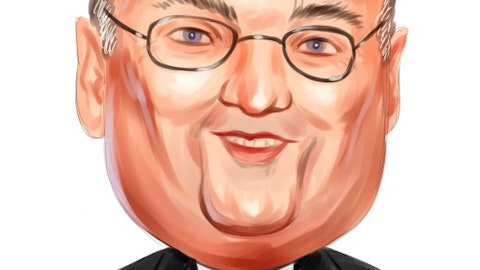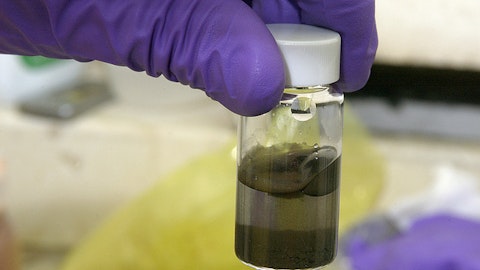Amid the latest market volatility, dividend investing is one of the safest bets on the equity markets. Large investors select dividend stocks not just for the continuous distributions that they provide while the stock keeps growing over the years, but also because companies that maintain a stable dividend-paying policy show management’s commitment to rewarding shareholders, as well as serving as a signal of a company’s financial stability. Among the many stocks that pay out dividends there is an elite group known as dividend aristocrats, which are companies that have been raising their dividends for the last 20 years. Given that Insider Monkey tracks almost 800 hedge funds and other large institutional investors, we decided to see how these smart money investors feel about dividend aristocrats. With this in mind, we selected five dividend aristocrats that hedge funds were fond of at the end of last year.
However, even though investing in dividend aristocrats is safer, these stocks might appreciate in value slower than others, which is why they don’t always represent the best risk-payoff combination for smaller investors. The main reason why we track the activity of almost 800 funds is our small-cap strategy, which showed that imitating the 15 most popular small-cap stocks among them can help a retail investor beat the market by around one percentage point per month over the long-run (see more details here).
McDonald’s Corporation (NYSE:MCD) ranks as the favorite dividend aristocrat among the funds in our database and is one of only two stocks in this list that registered an increase in popularity during the final three months of 2015. The number of funds holding shares of McDonald’s Corporation (NYSE:MCD) went up to 84 from 75 during the quarter, while the aggregate value of their holdings went up to $6.74 billion from $6.11 billion and represented roughly 6.20% of the company’s ownership at the end of December. McDonald’s shares appreciated by around 17% over the last 52 weeks, giving the $0.89 dividend that the stock sports a yield of 3.04%. Last year, McDonald’s launched its all-day breakfast program, which boosted its sales and helped the company deliver better-than-expected results last quarter. The company’s fourth-quarter revenue slipped by 3.5% on the year to $6.35 billion, but the decline was mainly attributed to a stronger dollar, while its EPS went up to $1.31, from $1.13 a year earlier. Both EPS and revenue beat analysts’ estimates of $1.23 and $6.22 billion, respectively. McDonald’s Corporation (NYSE:MCD) also showed that its same store sales went up by 5.7% in the fourth-quarter, beating the estimates of 2.7%. The main risk the company faces is the transition of consumers to healthier options, but investors are optimistic that the brand will remain popular and the company will adapt to new trends. Among the funds we track, Jonathon Jacobson’s Highfields Capital Management reported holding 11.90 million shares in its latest 13F filing.
Follow Mcdonalds Corp (NYSE:MCD)
Follow Mcdonalds Corp (NYSE:MCD)
Receive real-time insider trading and news alerts
Walgreens Boots Alliance Inc (NASDAQ:WBA) saw the number of funds with long positions in its stock drop to 78 from 91 during the fourth quarter. The aggregate value of their holdings also slipped to $6.90 billion from $9.51 billion and was equal to 7.40% of the company’s outstanding stock. Among the funds that remain bullish on Walgreens Boots Alliance Inc (NASDAQ:WBA) is billionaire Andreas Halvorsen‘s Viking Global, which owns 12.77 million shares, followed by Barry Rosenstein’s JANA Partners and Stephen Mandel’s Lone Pine Capital, with 12.30 million shares and 6.79 million shares, respectively. Walgreen Company, which merged with the Switzerland-based Boots Alliance at the end of 2014, had been on the dividend aristocrats list and maintained that standing as a newly-merged company last year, raising its dividend to $0.36 from $0.34, with the stock currently sporting a yield of 1.81%. To further expand its presence on the drug retail market, Walgreens Boots Alliance Inc (NASDAQ:WBA) is currently in the process of acquiring Rite Aid Corporation (NYSE:RAD) for $9.00 per share. Last month the shareholders of Rite Aid voted in favor of the merger, which is expected to be completed in the second half of the current year.
Follow Walgreens Boots Alliance Inc. (NASDAQ:WBA)
Follow Walgreens Boots Alliance Inc. (NASDAQ:WBA)
Receive real-time insider trading and news alerts
In Johnson & Johnson (NYSE:JNJ), 74 funds from our database reported long positions as of the end of December, versus 74 funds a quarter earlier. However, the total value of their holdings went up to $4.16 billion from $3.93 billion, boosted by a 10% growth registered by the stock. The slight decline in the popularity of the stock among smart money investors came amid turmoil in the healthcare sector, but the top shareholders remained committed to the company. Among them, billionaire Ken Fisher‘s Fisher Asset Management inched up its position by 2% to 10.82 million shares, while Donald Yacktman’s Yacktman Asset Management trimmed its exposure by 4% to 7.32 million shares during the fourth quarter. Johnson & Johnson (NYSE:JNJ) currently pays a dividend of $0.75 per share and its stock sports a yield of 2.82%, which is the second-highest among healthcare dividend aristocrats, trailing only AbbVie. For the fourth-quarter, Johnson & Johnson (NYSE:JNJ) posted adjusted EPS of $1.44, above the $1.42 expected by analysts, while its revenue of $17.81 billion was below the estimates of $17.88 billion. The company’s sales also fell by 2.4% on the year on the back of a stronger dollar, which it is hoping to counteract through a plan to reduce costs, in order to keep profits.
Follow Johnson & Johnson (NYSE:JNJ)
Follow Johnson & Johnson (NYSE:JNJ)
Receive real-time insider trading and news alerts
The second healthcare dividend aristocrat that made the list is AbbVie Inc (NYSE:ABBV), whose yield, as stated earlier, is the highest among healthcare dividend aristocrats. AbbVie pays a dividend of $0.57 per share, which gives the stock a yield of 4.06%. However, among the funds in our database, the number of investors with long positions in the stock slid by eight to 70 during the fourth quarter, while the aggregate value of their holdings inched up to $5.29 billion from $5.24 billion and totaled 5.50% of the company’s shares at the end of December. Earlier this week, the U.S Food and Drug Administration approved the use of IMBRUVICA for treatment-naive patients with chronic lymphocytic leukemia. For the fourth quarter, AbbVie Inc (NYSE:ABBV) reported EPS of $1.13, slightly above the estimates of $1.12, but its revenue of $6.36 billion missed the expectations of $6.41 billion. One of the funds bullish on AbbVie Inc (NYSE:ABBV) is Larry Robbins‘ Glenview Capital, which owns 13.54 million shares as of December 31.
Follow Abbvie Inc. (NYSE:ABBV)
Follow Abbvie Inc. (NYSE:ABBV)
Receive real-time insider trading and news alerts
Finally, on the fifth spot is Exxon Mobil Corporation (NYSE:XOM), in which 68 funds from our database reported long positions in during the latest round of 13F filings, versus 61 funds a quarter earlier, which makes it the second stock in this list that registered an increase in popularity during the fourth quarter. However, the total value of these funds’ holdings slid to $3.08 billion from $3.19 billion and was equal to just 0.90% of Exxon’s outstanding stock. Among the funds we track, Fisher Asset Management reported holding 6.07 million shares of Exxon as of the end of last year, down by 2% on the quarter. Amid a slump in oil prices, Exxon Mobil Corporation (NYSE:XOM)’s stock has declined by 7% over the last 52 weeks and currently sports a yield of 3.55% given the quarterly dividend payment of $0.73 per share. Amid the drop in crude prices, investors and analysts have been concerned as to whether Exxon will be able to keep paying high dividends to shareholders, but the company has a strong balance sheet and has cut its capital expenditures in order to offset the decline in oil prices. For the current year, Exxon Mobil Corporation (NYSE:XOM) plans to reduce its CAPEX by 25% to $23.2 billion and analysts expect the company to keep raising dividends and instead reduce its buyback program until oil prices rebound.
Follow Exxon Mobil Corp (NYSE:XOM)
Follow Exxon Mobil Corp (NYSE:XOM)
Receive real-time insider trading and news alerts
Disclosure: None





